- Register
- Log in to Tune-In
- Wishlist (0)
-
Shopping cart
(0)
You have no items in your shopping cart.
Beatles News
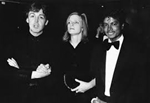
Paul McCartney reflects on John Lennon meeting Yoko Ono. Paul McCartney may be one of the most beloved figures in music, but even the Beatles legend hasn’t escaped his share of high-profile feuds.
From strained friendships to public spats, McCartney’s decades-long career has been as eventful off stage as it has been on. We’re delving into some of the most shocking fallouts that rocked Hollywood and the music world alike.
From his now-infamous disagreement with Michael Jackson over music publishing rights to the fiery exchanges with his fellow Beatles bandmate John Lennon, McCartney has often found himself at the centre of drama.
And it’s not just within the music industry – his run-in with actor Alec Baldwin over a heated yoga studio incident raised eyebrows in Tinseltown. Add his historically icy relationship with Yoko Ono into the mix, and it’s clear McCartney’s charm hasn’t always been enough to smooth things over.
As the Yesterday star prepares to bring his highly anticipated Got Back Tour to the UK with two shows each in London and Manchester, it marks the Beatles legend’s first UK concerts since 2018—excluding his iconic Glas details
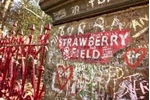
The vinyl is one of only 50 in existence. Tony Quinn, The Musical Box. The Salvation Army’s Strawberry Field in Liverpool has unveiled a rare, limited edition vinyl acetate of John Lennon and Yoko Ono’s iconic single, ‘Happy Xmas (War is Over)’.
A rare John Lennon vinyl is being displayed in a famous Beatles location in Liverpool. Strawberry Field has unveiled a limited edition of John Lennon and Yoko Ono’s 1971 single, ‘Happy Xmas (War is Over)’, which is one of only 50 in existence.
The record is on loan from The Musical Box in Tuebrook - the oldest independent record shop in England - to help raise money for Strawberry Field’s Steps to Work programme. It was gifted to the record store by Yoko Ono and Sean Lennon in 2021 and is one of 50 limited edition acetates sent to record stores and charities to celebrate the song’s 50th anniversary.
Independently owned and operated by the same family since 1947, The Musical Box holds a special place in music history, having been regularly visited by John Lennon and original Beatles drummer, Pete Best. Celebrating its 77th anniversary in 2024, the shop is run by third-generation owner, Tony Quinn, alongsi details

Sir Paul McCartney gets "very emotional" whenever he performs 'Now and Then'.
The 82-year-old music legend was part of the Beatles alongside John Lennon, George Harrison, and Ringo Starr - who is the only other surviving member of the group - and after he released the AI-assisted track as the band's "last" official release , he has included it on all of his tours but can become teary throughout because it was originally composed by his late bandmate.
He told The Daily Mirror: "It's really great. When you introduce a new song, even though it's an old song, like 'Now and Then', the first reaction is, people aren't quite sure what it is or what you're doing.
"But during the run of the concerts, they get the idea. The word gets out on the internet, you know. So now the reaction is really strong, and for us it's great to play because it's a nice song to play, and for me, it's particularly great because it's a John song.
"And so it's very emotional for me. I love it. I love doing it, and the audience seem to love it too."
The track - which has now been nominated for two Grammy Awards - is a demo recorded by Lennon - who was killed in December 1980 at the age of just 40 - in the wake of The Beat details

Sir Paul McCartney wants to take the audience by surprise and "prove them wrong" when the UK leg of his world tour begins on Saturday. The Walton-born Beatles legend, 82, has been on the road since October, playing huge gigs on his 'Got Back' tour in South America and Europe.
He will play two sold-out nights at Manchester's Co-op Live this weekend, before moving onto London's The O2. They will be Sir Paul's first gigs in the UK since his Glastonbury headline set in 2022 and he wants to keep an element of surprise to the shows.
About the Manchester concerts, Sir Paul told the Mirror: "On the first night we can pull some surprises, but then the minute that gets on social media. It’s like the old comedians who used to complain that their jokes got told, so the next people who saw them knew the jokes.
Source: Mark Jefferies, Dan Haygarth/liverpoolecho.co.uk
details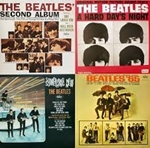
Sixty years after the Beatles’s first U.S. visit, the rock band still holds Billboard’s record for most No.1 songs on the Hot 100 chart and the record for most No.1 albums (19) in the history of Billboard’s tracking.
And sixty years later, there is still behind-the-scenes footage of that two-week visit in February 1964 that has not been widely seen. Now, it is available on Disney+. The documentary Beatles '64, produced by Martin Scorsese, restores rare footage of the rock stars Paul McCartney, John Lennon, George Harrison, and Ringo Starr, and their adoring—screaming—fans, which was filmed by documentarians Albert and David Maysles.
Much of the rarely seen footage involves the Beatles relaxing in between a frenetic schedule of radio, TV, and concert appearances. Viewers will see McCartney feeding seagulls bread out a window, and Harrison drinking a glass of water and strumming on a guitar. In one bit, Harrison is lying in the overhead compartment of a train.
“It’s so new to them, this level of success. They love it,” says Beatles '64 Director David Tedeschi. “They're having the time of their lives because they've dreamed about this for many years.&rdq details

John Lennon was one of the bestselling musicians of his time. Between the many, many smashes he released as one-fourth of The Beatles to his experimental and pioneering solo work, he never had a tough time selling his albums and singles. But people don’t purchase music like they used to. These days, streaming is king, and while many legacy acts haven’t been able to adapt to this new age in the music industry, Lennon has done so beautifully.
The late rocker claims a top 40 hit again in the United Kingdom, as his most famous holiday song is on the rise as the season continues. “Happy Xmas (War Is Over)” surges back into that region on one tally, which didn’t exist when Lennon was still alive.
“Happy Xmas (War Is Over)” surges from No. 67 to No. 30 on the latest edition of the Official Streaming chart. The ranking—and streaming platforms in general—weren’t introduced until decades after Lennon’s murder in 1980, so it would be understandable if he’d never landed on this list. The former Beatle’s Christmas cut is still so popular, though, that it breaks onto this tally at the end of every year.
Source: Hugh McIntire/forbes.com
details
Sabrina Carpenter Compares Meeting Paul McCartney With ‘Stranger Things’. The singer appeared on The Late Show to discuss her new holiday special, A Nonsense Christmas.
Sabrina Carpenter stopped by The Late Show to promote her new holiday special, A Nonsense Christmas, and to discuss her six Grammy nominations. During the conversation with host Stephen Colbert, the pop singer recalled hearing the Beatles‘ “Rocky Raccoon” for the first time as a child and immediately falling head over heels for Paul McCartney.
After downing an espresso martini, Carpenter told Colbert that she has always wanted to be a singer and that writing a song is her favorite thing to do. “Is it true the Beatles inspired you to start writing your own music?” Colbert asked.
“When I was very, very young, my dad played me ‘Rocky Raccoon’ for the first time, and I was so mesmerized by that song and the songwriting of it that I fell in love with Paul McCartney,” she replied. “I was convinced that was my husband, my future husband. But he was quite old. And I was so young I didn’t understand that he was much older than me … So when I grew up I just details

When Nancy Shevell McCartney was inducted into the W. P. Carey Alumni Hall of Fame at Arizona State University last month, she brought along her spouse — who is pretty famous in his own right.
Paul McCartney — Sir Paul, in the U.K. — attended festivities on the Tempe campus in support of his wife, watching her induction ceremony, mingling with faculty and staff, taking selfies with students and even throwing a pitchfork for the camera.
McCartney, 82, one of the greatest pop songwriters and musicians of all time and a member of the Beatles, is still busy. In the past few years, he’s released three albums and three books and performed several concerts. In October, the U.K. debuted a new 5-pound coin celebrating his career, with King Charles on the flip side.
McCartney married Nancy Shevell in 2011, the year he released the single “My Valentine.” In an episode of his podcast, he revealed that he wrote the song in 2007 just after he and Shevell took their first vacation together.
At that point, Shevell was a prominent business leader in the transportation and real estate industries. She was a member of the board of the New York Metropolitan Transportation Authority details

Ringo Starr has teamed up with Alison Krauss for the song “Thankful,” the second track off Starr’s forthcoming country music album, Look Up, set to drop on January 10, 2025.
Look Up, produced and co-written by T Bone Burnett, was recorded this year in Nashville and Los Angeles, The album features 11 songs, with nine written or co-written by Burnett. Starr sang and played drums on all the songs with Burnett enlisting some of Nashville’s biggest talent for the record, including Billy Strings, Larkin Poe, Lucius, Molly Tuttle and Krauss. The album’s debut track, “Time On My Hands,” written by Paul Kennerly, Daniel Tashian and Burnett, is currently available to stream.
Thankful was co-written by Starr along with Bruce Sugar, and Starr shares: “I love this track. I wrote it with my producer and engineer Bruce Sugar and I feel we put an LA country sound to it. For the lyrics, I always like to focus on the positive, and for this song in particular, about what we can be thankful for. I hope it brings you some joy and peace and love.”
Starr will perform new music off Look Up when he headlines the famed Ryman Auditorium in Nashville on January 14 and 15, 2025. details

The Gladiator II actor may be next in line to play one of theFab Four in Sam Mendes' upcoming series.
With a little help from casting directors and the rumor mill, the stars of the forthcoming separate Beatle biopics are coming into view — and could now include two actors from Gladiator II. According to Deadline, Joseph Quinn, who plays Emperor Geta in that film and is also known for Stranger Things, has signed on to play George Harrison in one of director Sam Mendes’ non-doc films on the lives of each Beatle.
Although nothing has been officially confirmed, it appears likely that Paul Mescal (Lucius in Gladiator II) will portray Paul McCartney in the Macca film. As per Ringo Starr, Barry Keoghan (The Batman, The Banshees of Inisherin, Saltburn, the upcoming Peaky Blinders film) will play the drummer in that installment. Asked at a recent premiere if he’d been cast in the John Lennon film, Harris Dickinson (Where the Crawdads Sing, The Iron Claw) would only say , “It would be amazing to do that. I think the idea of Sam teaming up to do something like that would be incredibly exciting. … It would be cool.”
Source: David Browne/Rollingstone.com

Recently found legal documents that cast new light on the demise of The Beatles on Thursday sold under the hammer for £9,000 ($11,400), UK auction house Dawsons said.
The documents were snapped up by a private buyer for nearly double their estimated price of £5,000.
They shed light on the numerous convoluted legal battles weighing heavily on the band at a time when they were also at odds over creative differences, the strain of stardom and John Lennon's girlfriend Yoko Ono.
Discovered in a cupboard where they had been stored since the 1970s, the documents include copies of The Beatles adviser's minutes of meetings, legal writs and a copy of the band's 1967 Original Deed of Partnership.
They show that after manager Brian Epstein died in 1967, the band realised that money was unaccounted for and that they were being pursued by the tax authorities.
Another damaging legal battle erupted when Paul McCartney opposed the decision by other band members to hire Allen Klein as their new manager.
Source: barrons.com
details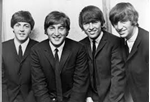
The Beatles bring their songs “I Want To Hold Your Hand” and “All My Loving” back to the U.K. charts ...
The Beatles launched their career with a run of hit singles that seemed like it would never end. They introduced themselves to the world with dozens of tunes that bounded up the charts and turned them into global superstars nearly overnight—and which ensured they remained among the bestselling and most adored names in the music industry for decades to come.
Two of the band’s earliest singles are back on the charts in the United Kingdom this week. The tracks, which have already sold incredibly well since they were released more than a half-century ago, both manage to debut on tallies they’ve never reached before—several of them at once, actually.
“I Want To Hold Your Hand” is the bigger win between the two, and it easily outpaces the other new arrival from The Beatles. The smash nearly brings the rockers back to the top spot on several lists, but it fails to conquer by just one space—though it does enter the top 10 on all three rosters it reaches this time around.
The Beatles debut “I Want To Hold Your Hand” at No. 2 details
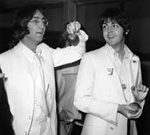
It’s not everyday that a major music icon asks you for advice. However, that did happen to Art Garfunkel when John Lennon asked him for advice on a pretty serious matter. As the story goes, the fate of one of music’s most beloved partnerships–Lennon and Paul McCartney–was left up to the advice of Garfunkel. He humbly accepted the challenge. Learn more about Garfunkel and Lennon’s conversation, below.
According to Garfunkel, Lennon pulled him aside amidst a get together with the former Beatle, Yoko Ono, and David Bowie. Despite having his partner and a longtime friend there, Lennon opted to ask Garfunkel–whom he had only met that day–for advice.
“I have my great memory of John Lennon when I met him that one night with Yoko Ono and David Bowie,” Garfunkel once explained. “It was the mid-70s, and we were coming back from some show we mutually did. So, we go back to the Dakota [John’s apartment], Bowie was with us. And John pulls me to the bedroom.”
Apparently, Lennon was in talks with McCartney about getting back together. According to Garfunkel, Lennon seemed very serious about the proposition. Before he jumped back into things again, details

Rumors of who will play the Beatles immediately began popping up as soon as it was announced that Sam Mendes was set to direct a Sony Pictures four-part biopic series about the Fab Four.
As of Wednesday, Paul Mescal is attached to the movies, likely as Paul McCartney, and Barry Keoghan will portray Ringo Starr (according to Starr himself). Charlie Rowe is rumored to take on George Harrison, while Harris Dickinson is said to be attached as John Lennon.
However, Dickinson played coy when I asked him about the casting Wednesday night at the premiere of his new erotic thriller “Babygirl.”
“It would be amazing to do that,” he said, smiling. “I think the idea of Sam teaming up to do something like that would be incredibly exciting. Obviously, John Lennon is a very complex role, a pretty formidable force to try to do. It would be cool.”
When I asked if he’s signed on for the project, Dickinson laughed and said “we’ll see,” before being ushered to his next interview on the carpet.
Source:Marc Malkin/ variety.com

In photos obtained by OK!, the former Beatles member could be seen greeting fans outside of the Ritz hotel in Madrid, Spain, on Monday, December 9.McCartney, who was wearing hearing aids at the time, appeared in great spirits as he happily made himself visible to a crowd of supporters. For the occasion, he stayed warm with a stylish flannel jacket. His gray facial hair formed a light mustache and scruff around his jawline.After greeting fans, he headed into a black vehicle outside of the lavish property, where he had been staying with his daughter Mary, 55, during the latest stop of his Got Back Tour.
Paul had back-to-back shows at the WiZink Center in Madrid on Monday and Tuesday, December 10. His tour — which began in April 2022 — is scheduled to end on Thursday, December 19, at The O2 in London, England.
Being spotted with hearing aids in his ears isn't new for the "Here Comes the Sun" singer, as he's been wearing the assisted device for years due to problems resulting from performing on stages worldwide for more than six decades and counting.
Source: MSN
